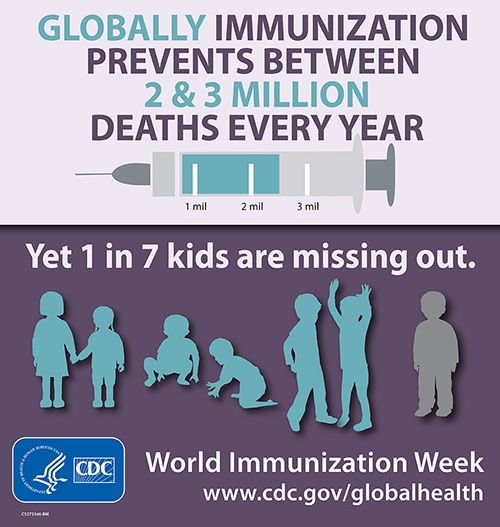Archive for the ‘Kids-Infants’ Category
UNICEF: As many as 150 children die every day in Myanmar before they reach their fifth birthday
Friday, May 26th, 2017- The child mortality rate is estimated at about 50 per 1,000 live births in Myanmar. In the UK, the rate is four per 1,000.
- Child rights violations, including the use of children as soldiers.
- Nearly 30% of children under five suffer from moderate or severe malnutrition
- More than half of all children live below the poverty line.
- In western Rakhine state, 120,000 internally displaced people live in camps as a result of inter-communal conflict that erupted in 2012.
- Violence against Rohingya Muslims, for whom the government does not provide full citizenship rights, has surged since October following attacks on border guard posts.
WHO: More than 1.2 million adolescents die every year around the world — an average of 3,000 deaths per day — from causes that are largely preventable
Tuesday, May 16th, 2017- The leading cause of death among 10- to 19-year-olds globally in 2015 was road injury, which killed more than 115,000 people, followed by lower respiratory infections and self-harm.
- Two-thirds of deaths among adolescents occur in Southeast Asia and Africa.
Syria: A suicide bomber who killed more than 120 people in Syria lured children toward him by handing out crisps before detonating his explosives.
Monday, April 17th, 2017“….The bomb….killed at least 126 people including 68 children [as it] tore through buses carrying evacuees from besieged government-held towns….”
A new vaccine against rotavirus (kills about 600 children a day) worked well in a large trial in Africa and appears to be a practical way to protect millions of children.
Friday, March 24th, 2017- The vaccine is expected to be as cheap as or cheaper than current alternatives.
- It can last for months without refrigeration, which makes it far easier to use in remote villages with no electricity
- It must be approved by the World Health Organization before it can be widely distributed
- About 215,000 children under 5 die each year of rotavirus, almost half of them in just four countries: India, Pakistan, Nigeria and the Democratic Republic of Congo
Tourism vs. Child Protection: A Compilation of Good Practices
Friday, March 24th, 201715 Years of the UNWTO World Tourism Network on Child Protection: A Compilation of Good Practices
Copyright © 2014, World Tourism Organization (UNWTO)
15 Years of the UNWTO World Tourism Network on Child Protection: A Compilation of Good Practices
Published by the World Tourism Organization (UNWTO) First printing: February 2014 All rights reserved.
March 18, 1937: Nearly 300 students in Texas are killed by an explosion of natural gas at The Consolidated School of New London, Texas.
Saturday, March 18th, 2017https://www.youtube.com/watch?v=KSW0gLsFz7w
More than 3,300 children were hospitalized in Egypt on Tuesday after an outbreak of food poisoning at several state-run primary schools
Thursday, March 16th, 2017“…..A total of 3,353 children became ill, and at least 50 ambulances were sent to the schools, state news media said. Since then, all but 17 of the students have recovered and been discharged. No deaths or serious complications were reported…..”
World Tourism Network on Child Protection
Saturday, March 11th, 2017World Tourism Network on Child Protection
The World  Tourism Network on Child Protection (formerly the Task Force for the Protection of Children in Tourism) is an open-ended network featuring the multi-stakeholder participation of a range of tourism stakeholders, from governments, international organisations and non-governmental organisations (NGOs) to tourism industry groups and media associations. Originally formed in 1997, since 2007 its mandate has been to prevent all forms of youth exploitation in the tourism sector (i.e. sexual exploitation, child labour and child trafficking). ….
Tourism Network on Child Protection (formerly the Task Force for the Protection of Children in Tourism) is an open-ended network featuring the multi-stakeholder participation of a range of tourism stakeholders, from governments, international organisations and non-governmental organisations (NGOs) to tourism industry groups and media associations. Originally formed in 1997, since 2007 its mandate has been to prevent all forms of youth exploitation in the tourism sector (i.e. sexual exploitation, child labour and child trafficking). ….
The activities of the World Tourism Network on Child Protection are co-ordinated by the UNWTO Secretariat and monitored by an Executive Committee established in November 2000.
Mission Statement and Objectives
Under the guiding principles of the Global Code of Ethics for Tourism, the mission of the World Tourism Network on Child Protection is to support efforts to protect children from all forms of exploitation in tourism. Although its main focus is the protection of minors against sexual exploitation, it encompasses the issues of child labour and the trafficking of minors. Its principle objectives are:
- to raise awareness among the tourism sector, governments and tourists;
- to encourage the tourism industry to engage in ethical practices, particularly by adopting professional codes of conduct and other self-regulatory measures;
- to invite governments to take administrative and legal measures, such as the designation of focal points (contact persons) within their national tourism administrations, the establishment of emergency hotlines, the strengthening of national legislation and the improvement of law enforcement;
- to encourage cooperation between the public and private sectors, as well as between tourist generating and receiving countries; and
- to monitor the fight against the sexual exploitation of children in tourism networks at both the national and international levels.
History of the World Tourism Network on Child Protection
The World Tourism Network on Child Protection was established as a “Task Force” by the World Tourism Organization in March 1997 at the ITB Berlin Tourism Fair in Germany, as a follow-up to the Stockholm Congress against the Commercial Sexual Exploitation of Children (1996). Two months later, the Task Force launched the international campaign “NO Child Sex Tourism” to combat the commercial sexual abuse of children in tourism by raising awareness of this unacceptable phenomenon. The logo for this campaign was provided by the Brazilian Tourist Board EMBRATUR. First presented to the media in Chantilly, France, during the “Salon mondial du tourisme” fair.
During its first phase (1997-2007), the focus of the body was the prevention of sexual exploitation of children in tourism. In March 2007, at the 20th Task Force meeting held in Berlin, Germany, its mandate was extended to cover all forms of exploitation of minors in tourism, including child labour and child trafficking. The name of the Task Force was changed to “World Tourism Network on Child Protection” in 2011.
- October 1995 – Member States of the World Tourism Organization take a stand against the sexual exploitation of children in tourism by unanimously adopting the Statement on the Prevention of Organized Sex Tourism at the General Assembly in Cairo, Egypt.
- August 1996 – The Stockholm Congress against Commercial Sexual Exploitation of Children introduces its Agenda for Action, which urged all participants to:
- mobilize the business sector, including the tourism industry, against the use of its networks and establishments for the commercial sexual exploitation of children; and
- promote better co-operation and encourage the establishment of national and international coalition to this effect.
- At the Congress, as many as 122 countries agreed to undertake measures to curb the commercial sexual exploitation of children. Several tourism industry associations (IATA; IFTO, IH&RA, UFTAA, etc.), also issued policy documents explicitly addressing this topic.
Yemen: UNICEF vaccination campaign reaches five million children
Saturday, March 11th, 2017“….In the first campaign of its kind this year, 40,000 vaccinators spread across Yemen to provide children with polio vaccine and vitamin A supplements. Mobile health teams have reached children wherever they are, including in places where access to health services has been cut off by the fighting. Health workers have shown heroic resolve in crossing frontlines, mountains and valleys to vaccinate children…..”

A little boy is vaccinated against polio in Sa’ada, Yemen. (file) Photo: UNICEF/UN026952/Madhok





